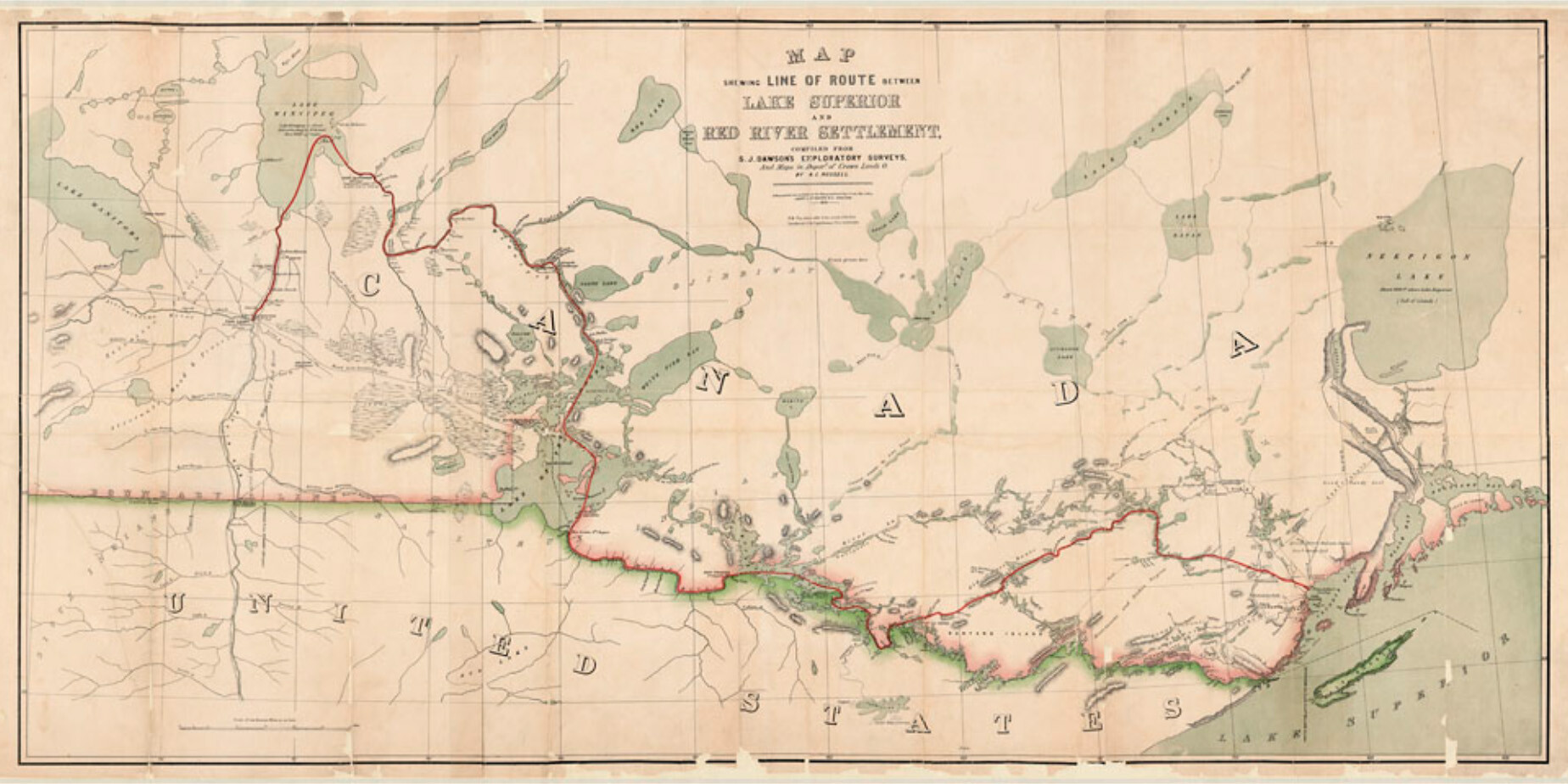A Report on Métis Identity by Senate Aboriginal Peoples Committee
Ottawa (June 6, 2013) – A report on Métis identity released today by the Senate Aboriginal Peoples Committee calls on the federal government to...

Many reports and data sets indicate that Indigenous peoples' incomes and workforce representation are on the rise; however, to get a full picture, it’s essential to examine the underlying factors of how data is collected, analyzed, and reported.
Gross Domestic Income (GDI) is the income generated by economic activity through employee compensation and business income. Put simply, GDI is the money made by working or owning a business.
Quantitative data released by Statistics Canada in 2025 in the report Indigenous peoples economic account, 2022 [1], showed a significant increase in Indigenous peoples’ earnings over 10 years. Between 2012 and 2022, Indigenous GDI increased by 74.7%, which was greater than the total population of Canada, which saw an increase of 54%.
Public administration and construction saw the most GDI growth for Indigenous peoples in these 10 years, representing one-third of the increase. The arts, entertainment, recreation, mining, quarrying, and oil and gas extraction sectors grew at the fastest pace, accounting for 6.8% of Indigenous GDI.
Several factors account for the rise of GDI for Indigenous peoples between 2012 and 2022. These include the growing participation of Indigenous peoples in the workforce, government-supported programs, increased contributions by Indigenous nations to supply chains, increased contributions by Indigenous peoples to international trade opportunities, efforts to grow diversity in sectors and the workforce, and economic development programs.
The report also showed an increased number of jobs available for Indigenous peoples. In 2022, the aforementioned report showed that the number of jobs held by Indigenous peoples in Canada grew by 4.4% over the 10-year span, reaching nearly 887,000. In 2022, one in 22 jobs in Canada was held by Indigenous peoples. During the period between 2012 and 2022, jobs held by Indigenous peoples grew 29.5%, whereas the entire Canadian economy only saw a 12.2% growth in jobs. The sectors that showed the most growth in jobs for Indigenous peoples were within health care and social assistance, public administration, and retail trade.
While this quantitative data sounds promising, it doesn’t tell the whole story, demonstrating why it is important to examine the nuance or qualitative factors of statistics.
Several factors account for increased jobs, where certain factors proved to be an advantage to some Indigenous peoples, while other factors show that some Indigenous groups were left at a disadvantage.
Alberta, Saskatchewan, and Manitoba did not report an increase in available jobs for Indigenous peoples, while British Columbia and Ontario saw the largest increase. Factors influencing this include population size and the sectors that are most prominent within these provinces.
The areas that saw the most increases in jobs for Indigenous peoples were held by those aged 45 or older, while jobs for those aged 15 to 24 showed a lower increase. The available jobs were highly dependent on education level, favouring those with a trades certificate, college diploma, or higher level of education.
While calculating GDI, in Indigenous peoples economic account, 2022, Statistics Canada admits that this data set is only indicative of their approach to collecting data. For instance, when accounting for Indigenous-owned businesses, they only consider those businesses that are majority Indigenous-owned and have 50% or greater representation of those who identify as Indigenous.
In 2024, Statistics Canada released another report, Quality of employment among First Nations people living off reserve and Métis, 2022 [2], with data derived from three main sources: Canada’s Statistical Framework on Quality of Employment, the Labour Force Survey (LFS), and the 2016 General Social Survey (GSS) on Canadians at Work and Home. These reports show significant gaps in what they entitle Quality of Work or QoE for Indigenous groups that live off-reserve and those who are Métis.
Some trends found included lower hourly earnings for off-reserve Indigenous peoples and Métis people, fewer managerial positions, higher rates of discrimination and sexual harassment, lower work-life balance, lesser job security, and fewer opportunities to participate in training compared to their non-Indigenous colleagues. The report also highlighted that there is a high pay gap between off-reserve and Métis men and women in comparison to the non-Indigenous population.
The report highlighted that the percentages of Indigenous peoples, especially those who are Métis, have greater membership in unions, with Indigenous women having higher representation in unions than men in comparison to the non-Indigenous population. Union membership reflected the types of jobs that Indigenous peoples were in, which are more likely to be represented by a union.
Another report, the 2024 Indigenous Economic Progress Report [3] by the National Indigenous Economic Development Board, indicated that employment rates for First Nations on reserve remain the lowest. The report also indicated that the gap in labour force participation rates between First Nations on reserve and those who are non-Indigenous had both increased by 22.8% since the 2006 census.
Labour force participation for Métis is the highest, and those who are Inuit are seeing a significant drop in labour force participation.
Looking at the Community Well-Being Index, the National Indigenous Economic Development Board showed that education is a significant indicator of community well-being, which includes labour force participation. High school completion rates are increasing for First Nations and Métis, while those for Inuit are on the decline. The report also shows that Indigenous-controlled educational programs have significantly higher high school graduation rates. Graduation rates in Indigenous-controlled education programs have reached 95%, making it evident that incorporating Indigenous culture, language, and history into high school curricula is imperative for high school graduation rates, whereas colonial models of education are more indicative of assimilation.
It’s important to remember that Statistics Canada reports have shown that high school graduation isn’t necessarily enough to obtain higher wages for Indigenous peoples.
In their conclusion, the National Indigenous Economic Development Board shows that while progress has been made, there is still disparity between Indigenous peoples and the non-Indigenous population. They reference the 2024 Indigenous Economic Progress Report, which includes a strong set of recommendations and strategic indicators that foster growth and prosperity within Indigenous communities, and thus promote self-determination and economic advancement.
By looking at these various data sets and reports, Indigenous Corporate Training, Inc. can see that there is an actual improvement in how much money Indigenous peoples are making, but how important it is to dig into how data is collected and the underlying factors that may contribute to what seems like progress or regression.
There is a long way to go before we can claim parity between Indigenous peoples and non-Indigenous people in Canada; however, we are hopeful for the future of Indigenous representation in the labour force and their contributions to the overall economy of Canada.
Indigenous Corporate Training, Inc. offers a broad range of courses that help people understand and advance the representation of Indigenous peoples in all sectors of society.
If your company genuinely wants to improve Indigenous representation in the labour force, we recommend taking our course, Indigenous Employment: Recruitment & Retention. This course will help you discover the business case for Indigenous employment and familiarize yourself with the barriers to Indigenous participation in the workforce. This training is offered through in-person training, live-guided online training, and self-guided online training.
Let’s work together to close the gaps and ensure that Indigenous peoples have equitable rates of success for income potential and access to employment opportunities, as the non-Indigenous people with whom their lands are shared.
[1] Statistics Canada. (2025, April 16). Indigenous peoples economic account, 2022. The Daily.
[2] Statistics Canada. (2024, February 28). Quality of employment among First Nations people living off reserve, Métis and Inuit, 2022.
[3] National Indigenous Economic Development Board. (2024). 2024 Indigenous economic progress report.
Featured photo: Pixabay

Ottawa (June 6, 2013) – A report on Métis identity released today by the Senate Aboriginal Peoples Committee calls on the federal government to...

In 1801, a group of Métis settled at the intersection of the Red and Assiniboine Rivers, where Winnipeg stands today. They were referred to as...

We’ve talked about the definition of Indigenous Peoples and the constitutional significance of Indigenous or Aboriginal. In this article, we drill...